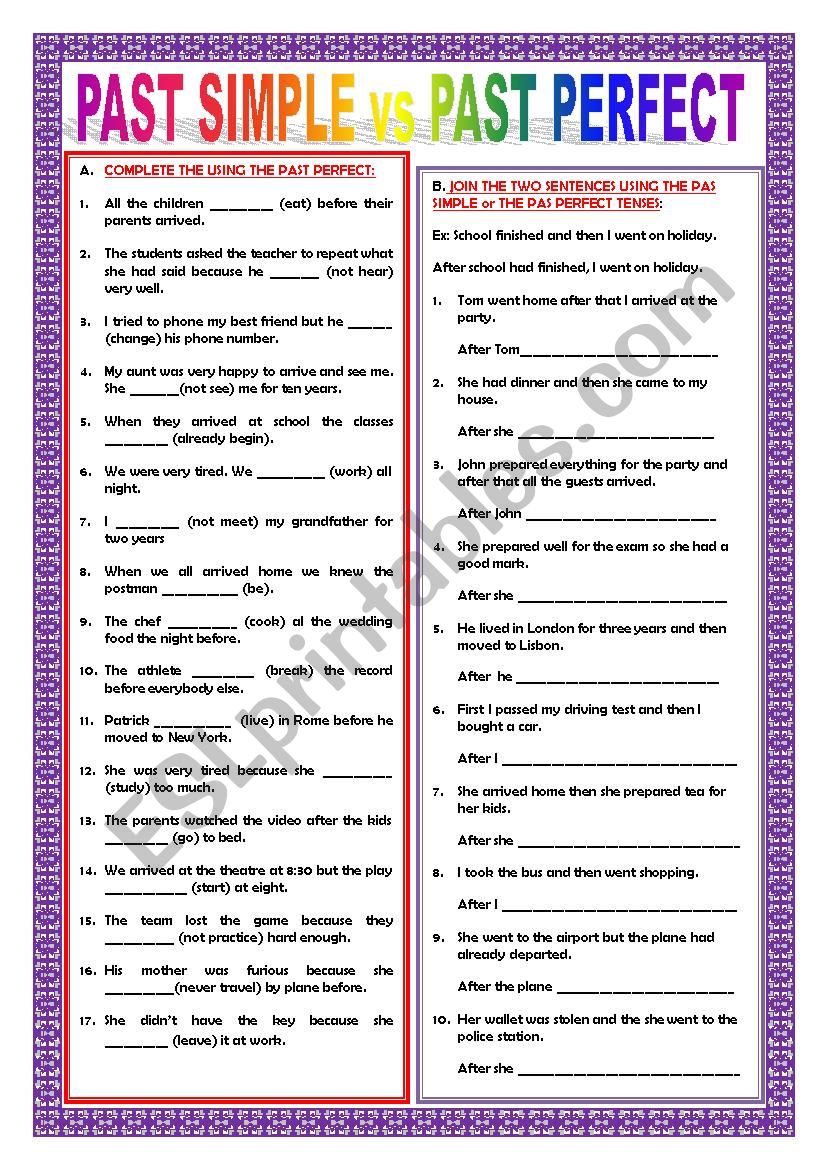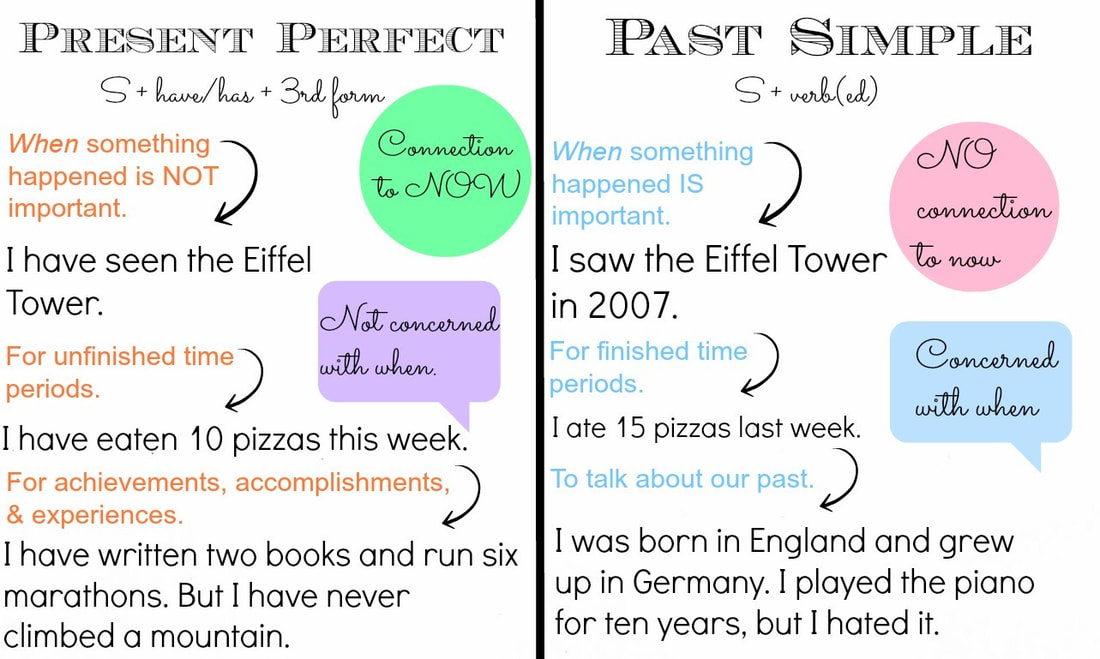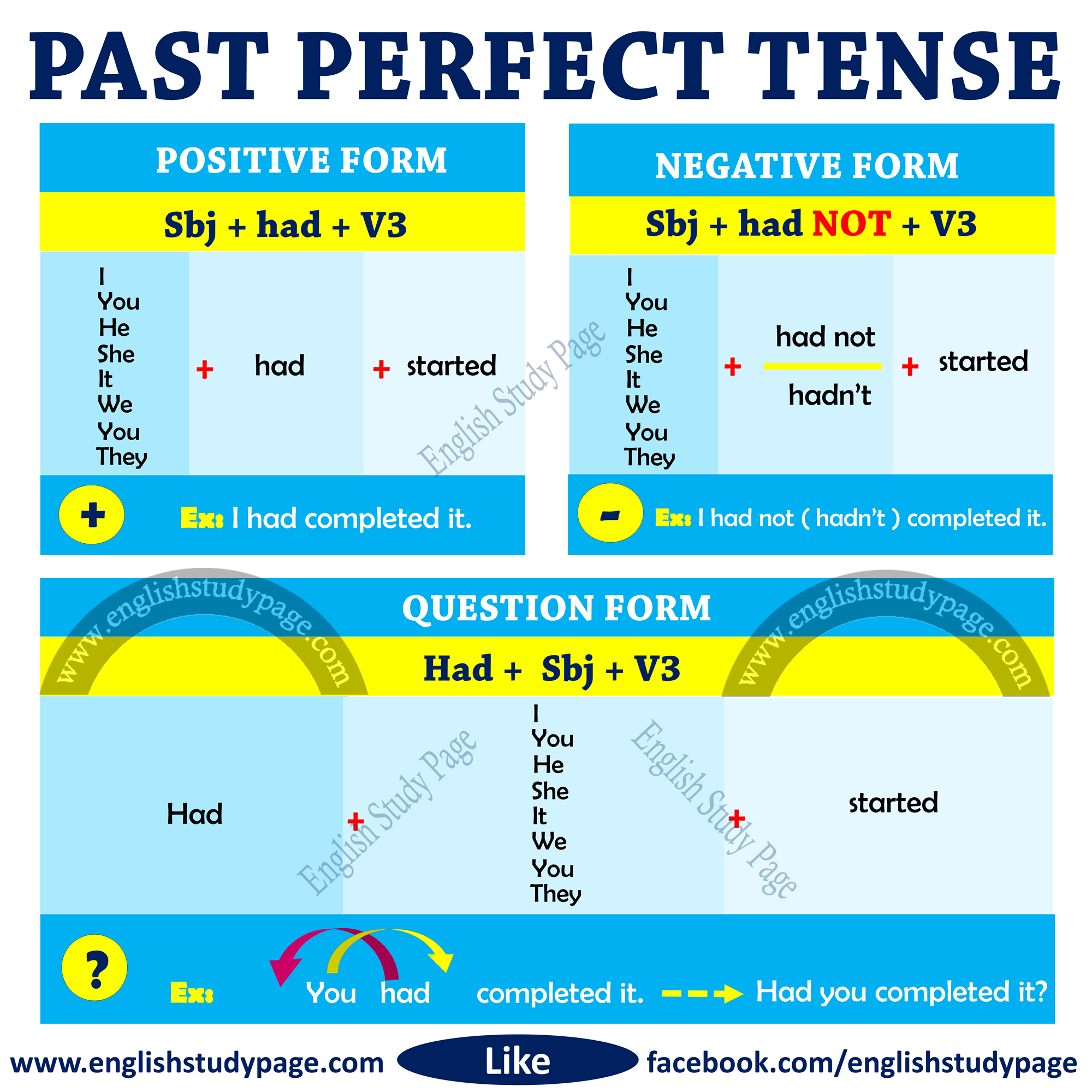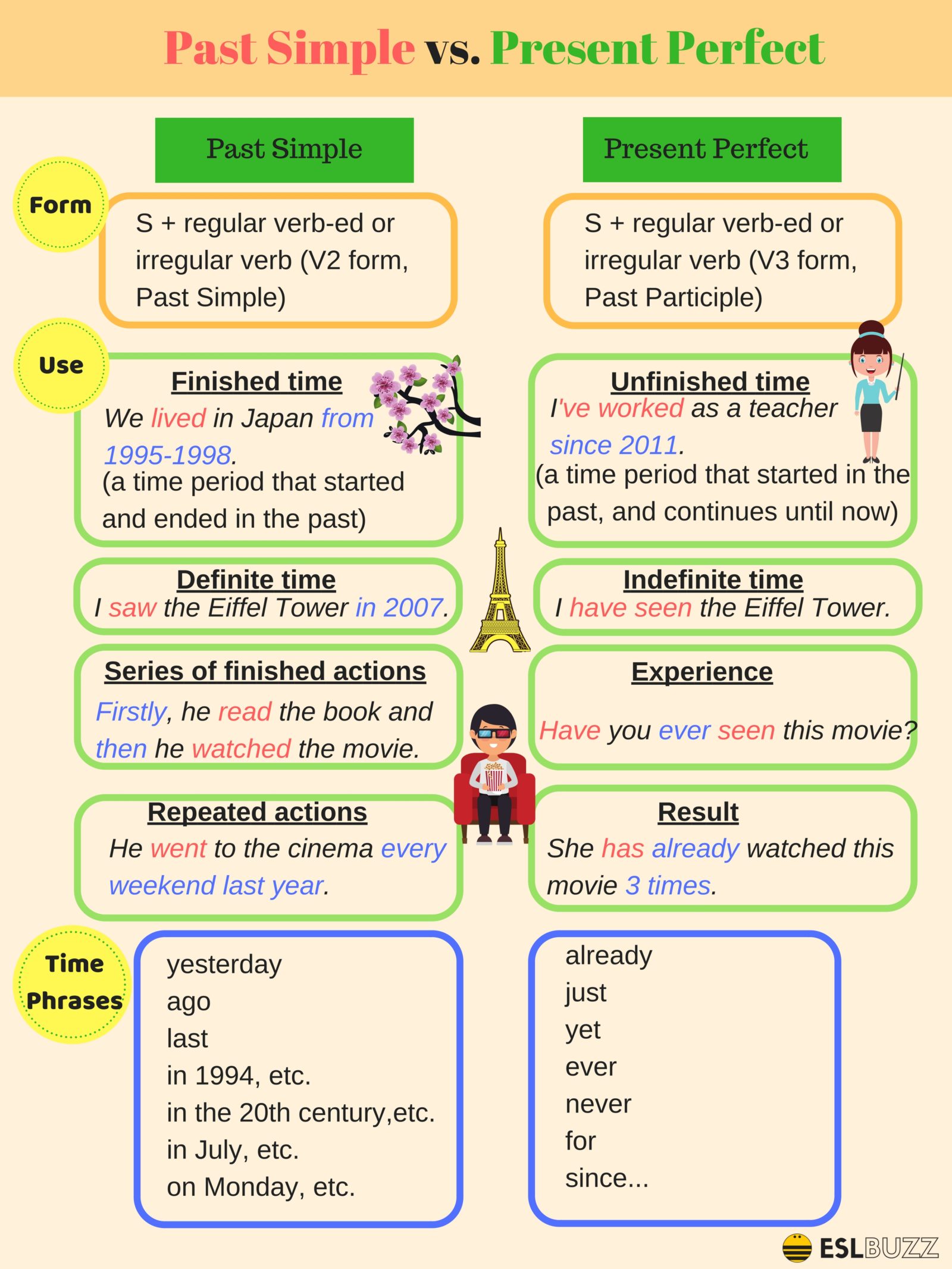
Simple Past Perfect Tense NatalyabbSexton
The past perfect simple is used to sequence events in the past to show which event happened first. Compare The past simple often suggests a stronger connection between the time of the two events. Compare Word of the Day UK /səʊk/ US /soʊk/ a period of time during which something is in liquid To top Contents

Past Perfect and Past Perfect Continuous Useful Differences • 7ESL
The Simple Past is used to describe completed actions in the past, while the Past Perfect is used to describe actions that were completed before a specific time in the past. It's important to understand the difference between these two tenses in order to communicate accurately and effectively in English.

Past Perfect Tense Definition, Rules and Useful Examples • 7ESL
Perfect English Grammar The Past Simple Tense (also called the simple past tense) Click here to download this explanation as a pdf. Click here to learn about how to USE the past simple. It's similar to the present simple because it has different rules for the verb 'be', which becomes 'was' or 'were': The Past Simple with 'be'

past perfect vs simple past Perfect (Grammar) Verb
The past perfect is made from the verb had and the past participle of a verb: I had finished the work. She had gone. The past perfect continuous is made from had been and the -ing form of a verb: I had been working there for a year. They had been painting the bedroom.

PAST PERFECT SIMPLE VS PAST SIMPLE EXERCISES ESL worksheet by
Perfect English Grammar Past Perfect or Past Simple Exercise 1 Choose the past perfect or the past simple. Click here to review how to use the past perfect and here for the past simple. Click here to download this exercise in PDF (with answers) Choose past simple or past perfect 1 Choose the past simple or the past perfect tense

30+ Play In Past Perfect Image Sado
contrast: past perfect simple vs past simple. Reference. Complete the sentences with the simple past or past perfect form of the verbs in brackets. Use full forms ( I have ), not short forms ( I've ). Question: 1 / 4. By the time they (get) home from school, their favourite TV show (finish). Free exercises to practise Past simple and past.

campanie homosexual Putred past perfect english A face patul canapea dragă
We use the past perfect simple ( had + past participle) to talk about time up to a certain point in the past. She'd published her first poem by the time she was eight. We'd finished all the water before we were halfway up the mountain. Had the parcel arrived when you called yesterday? Past perfect for the earlier of two past actions

Pin on ENGLISH
past simple vs. past perfect past perfect past simple There are similarities and differences between past simple and past perfect, which might cause confusion. What is Their Main Difference? While both tenses tend to talk about past events, there are important differences between them.

Narrative tenses Grammar chart, English grammar, Learn english words
The past perfect is 'the past of the past'; it describes an action or event that took place before another point or action in the past (usually expressed in the simple past). Example: When Naomi arrived, the party had already started. action 1: beginning of the party; action 2: Naomi's arrival

Present Perfect vs Past Simple Useful Differences • 7ESL
We can use the past perfect with the past simple when we talk about two actions or events in the past. I phoned the office, but Emma had already left. We use the past perfect for the action that happened first. We often use already/just with the past perfect to say when it happened.

Present Perfect vs Past Simple Useful Differences • 7ESL Present
However we use past perfect to talk about something that happened before another action in the past, which is usually expressed by the past simple. For example: "I had already eaten my dinner when he called." In other words, First I ate my dinner, then he called. The past perfect is often used with already, yet, just and even.

triste con tiempo africano past perfect examples with already vértice
The past perfect tense is a verb form used to refer to a past action that occurred before another past action. The past perfect is formed using "had" along with the past participle of the main verb (e.g., "I had run"). All verbs in the past perfect tense take this form regardless of the subject (e.g., "she had known," "we had known").

Sintético 100+ Foto Diferencia Entre El Past Simple Y El Present
We use the past perfect simple to talk about actions that were completed before another action or situation in the past. We use it to focus on the result of the action. Anna had left when we arrived. Had the meeting started by the time you got there?

WRITTEN COMMUNICATION III 2020 Oh lord, more tenses!
The past perfect could be replaced by the past simple here and the meaning would still be clear because the word before makes the order of events clear. Rich : In the example: I sat down and I realised the chair had been replaced we need the past perfect to show that the chair had been replaced at an earlier time.

English Tenses Past Simple and Present Perfect ESLBUZZ
English Grammar Verbs Past tense Past simple Past simple Level: beginner With most verbs, the past tense is formed by adding -ed: called liked wanted worked But there are a lot of irregular past tense forms in English. Here are the most common irregular verbs in English, with their past tense forms: We use the past tense to talk about:

Past Perfect Simple Examples
We form the past perfect (simple) with: Subject + had/hadn't + past participle The form is the same for all persons. We can answer yes/no questions with short answers. 'Had she passed the test?' 'Yes, she had.' 'Had you seen the film before?' 'No, I hadn't.'